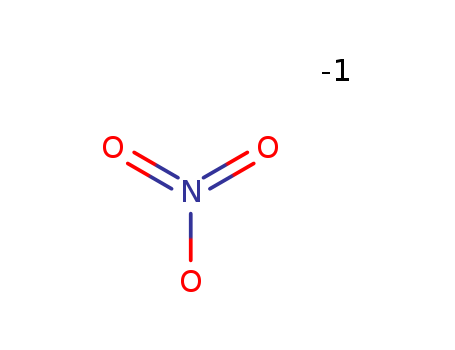- Chemical Name:Nitrate
- CAS No.:14797-55-8
- Deprecated CAS:23746-18-1,34236-35-6,73394-83-9
- Molecular Formula:NO3
- Molecular Weight:62.0049
- Hs Code.:2834219000
- UNII:T93E9Y2844
- DSSTox Substance ID:DTXSID5024217
- Wikipedia:Nitrate,Nitrate ion
- Wikidata:Q182168
- NCI Thesaurus Code:C80487
- RXCUI:1546271
- ChEMBL ID:CHEMBL186200
- Mol file:14797-55-8.mol
Synonyms:Nitrate;Nitrates





